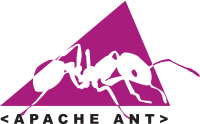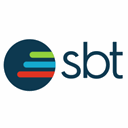Top Buck Alternatives: Finding the Best Build System for Your Project
Buck, a build system developed and used by Facebook, excels at encouraging the creation of small, reusable modules of code and resources, supporting a variety of languages across many platforms. While Buck is powerful, specific project requirements, team familiarity, or a desire for different features might lead you to explore a Buck alternative. This article delves into the top build system alternatives that can seamlessly integrate into your development workflow.
Top Buck Alternatives
Whether you're looking for cross-platform compatibility, specific language support, or a different approach to project management, these alternatives offer robust solutions to streamline your build process.

CMake
CMake is a robust family of tools designed to build, test, and package software. It's a fantastic Buck alternative for projects requiring extensive C++ and C support due to its powerful cross-platform capabilities. Being free and open-source, CMake runs on Mac, Windows, Linux, and Haiku, making it highly versatile for diverse development environments.

GNU Make
GNU Make is a fundamental tool that controls the generation of executables and other non-source files from a program's source files. As a free and open-source tool, it's widely available on Mac, Windows, Linux, BSD, and Cygwin. While it doesn't boast specific added features, its simplicity and widespread adoption make it a solid, reliable Buck alternative for many projects.

Maven
Apache Maven is a powerful Java-based tool for build automation and project management, centered around its Project Object Model (POM). It's a strong Buck alternative for Java-heavy projects, offering features like C++ support and comprehensive build system capabilities. Maven is free, open-source, and compatible with Mac, Windows, and Linux.

SCons
SCons is an Open Source software construction tool, often considered a next-generation build tool and an improved, cross-platform substitute for classic Make. Its cross-platform nature makes it an excellent Buck alternative for projects that need flexibility across Mac, Windows, and Linux. SCons is free and open-source, providing a modern and robust build environment.

Gradle
Gradle is an evolved build automation tool capable of automating the building, testing, publishing, and deployment of software packages. It stands out as a highly capable Buck alternative, particularly for projects involving Java, due to its advanced build system features. Gradle is free, open-source, and supports Mac, Windows, and Linux.

Ant
Apache Ant is an Open Source Java-based build tool that uses XML files to describe, structure, and control the build process. Most actions are executed within Ant. As a free and open-source option, Ant is a reliable Buck alternative, especially for Java development, available on Mac, Windows, and Linux.

Rake
Rake is a software task management and build automation tool that allows you to specify tasks and describe dependencies, grouping tasks in namespaces. It's an excellent Buck alternative for projects benefiting from Ruby integration, offering a portable build system. Rake is free and open-source, compatible with Mac, Windows, Linux, and BSD.

Meson
Meson is an open-source build system designed for speed and user-friendliness. It's a compelling Buck alternative, especially for projects using Java, Linux, or Rust, due to its efficient build system features. Meson is free and open-source, supporting Mac, Windows, and Linux, making it a modern and performant choice.

SBT
SBT is a dedicated build tool for Scala, often compared to Ant or Maven but with its unique approach. For Scala developers, SBT is the quintessential Buck alternative, providing specific features for Java projects. It's free, open-source, and available on Mac, Windows, and Linux, making it a strong choice for Scala-centric development.
Choosing the right build system is crucial for project success. By exploring these powerful Buck alternatives, you can find the perfect fit that aligns with your team's expertise, project requirements, and desired features, ultimately streamlining your development workflow.